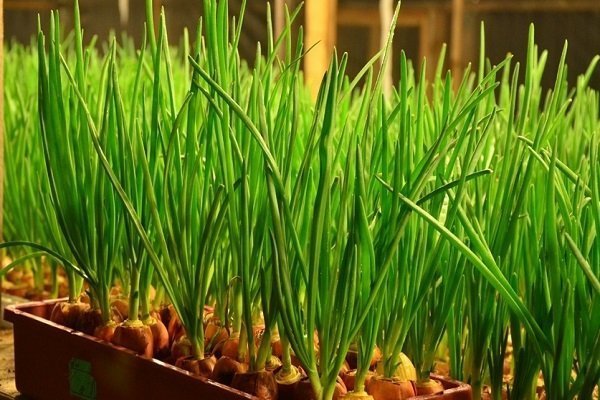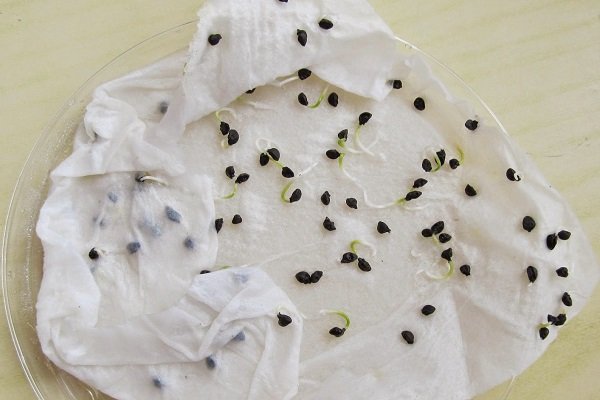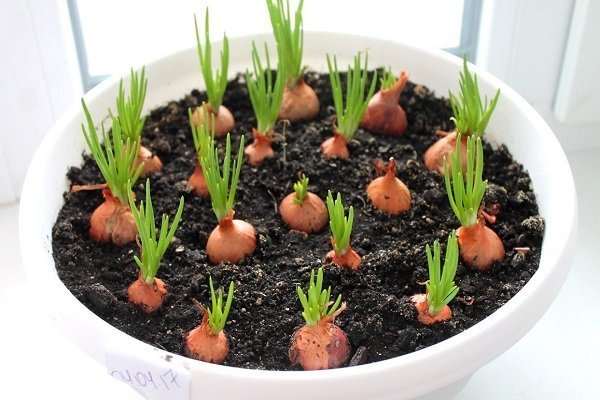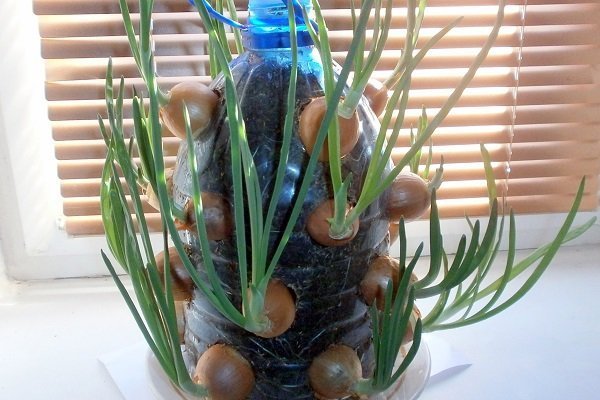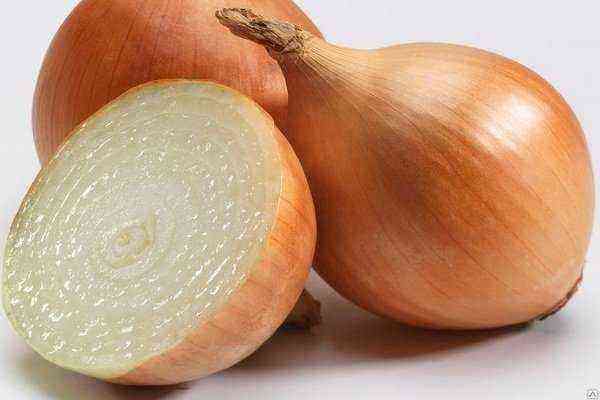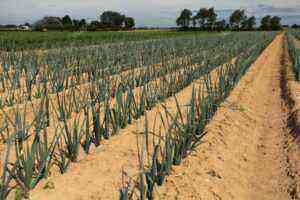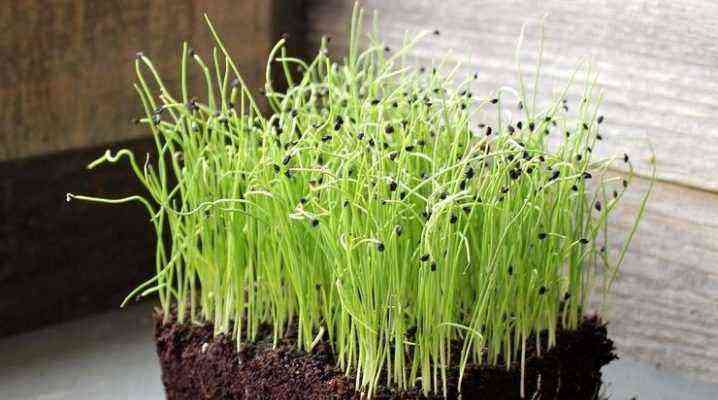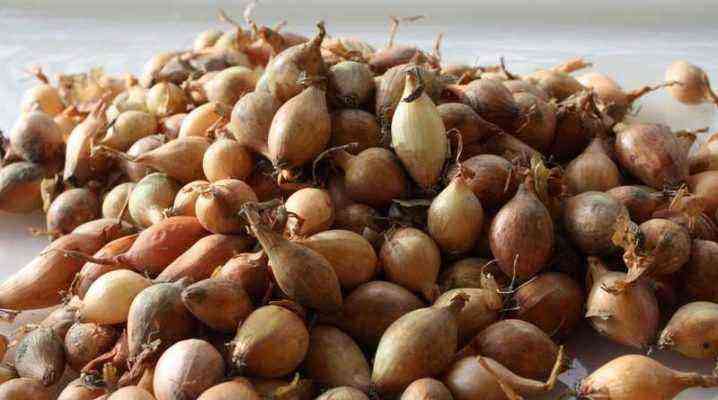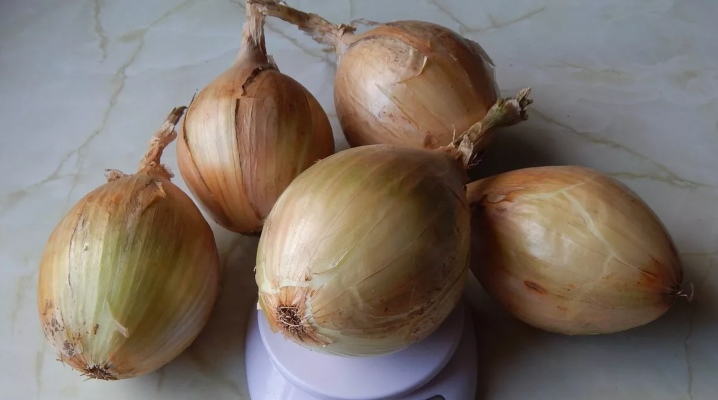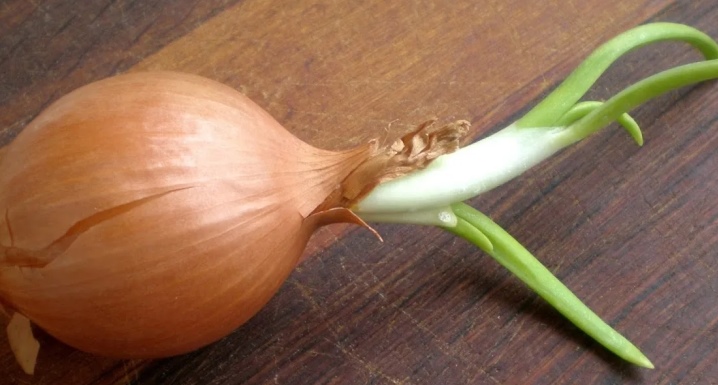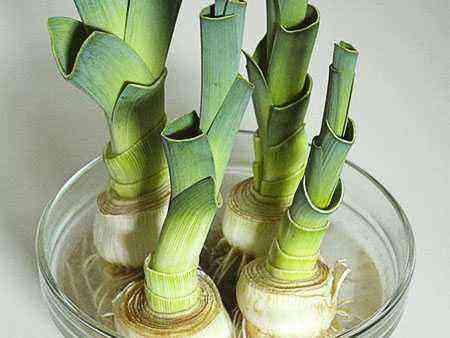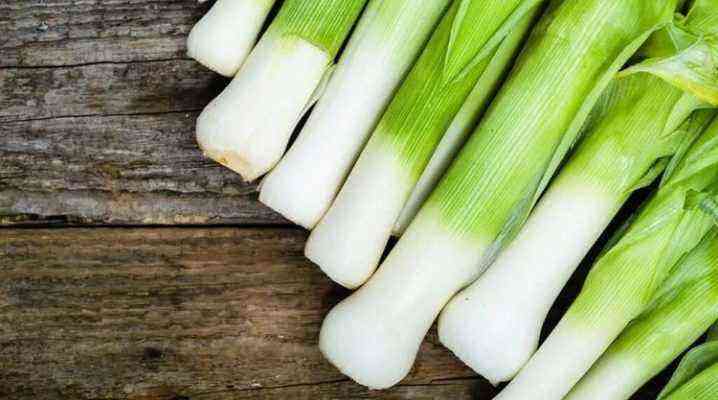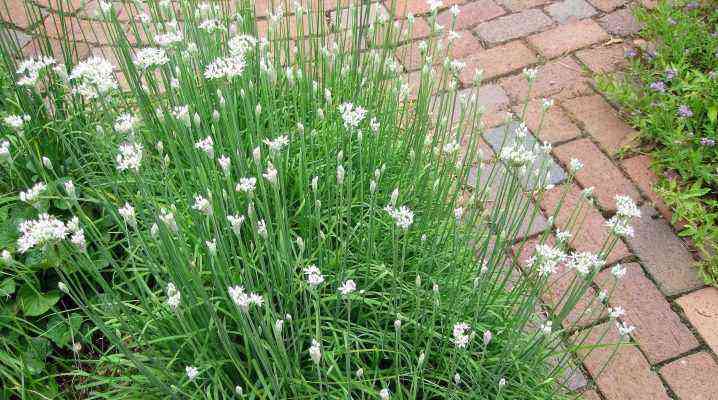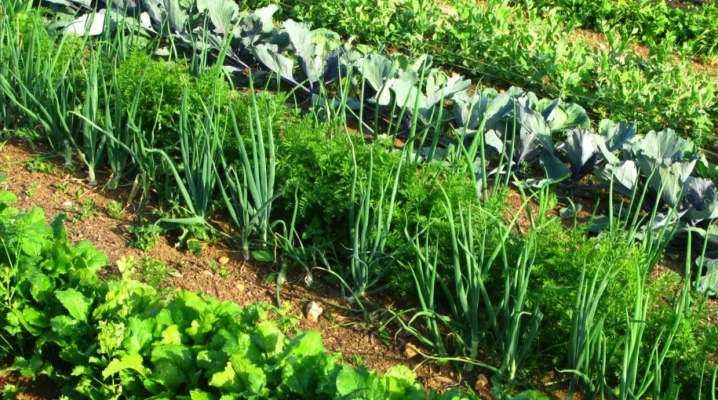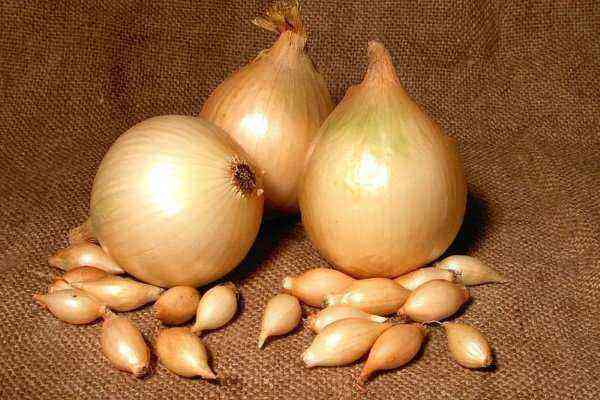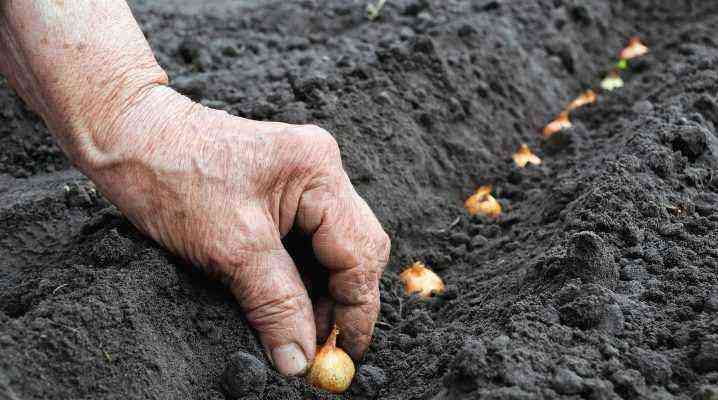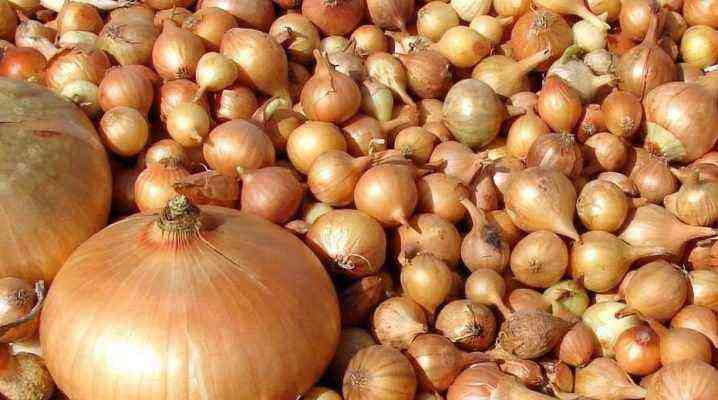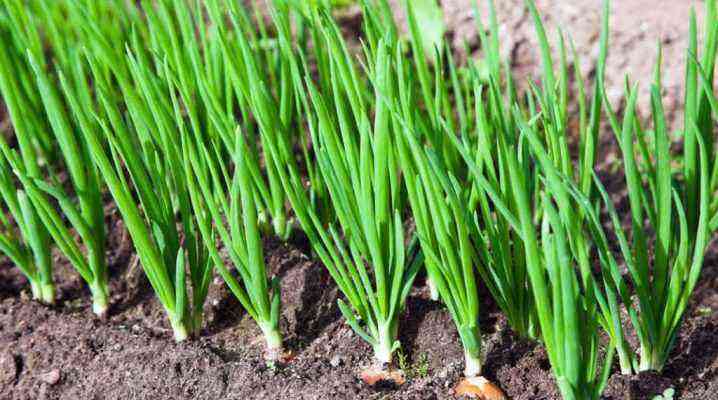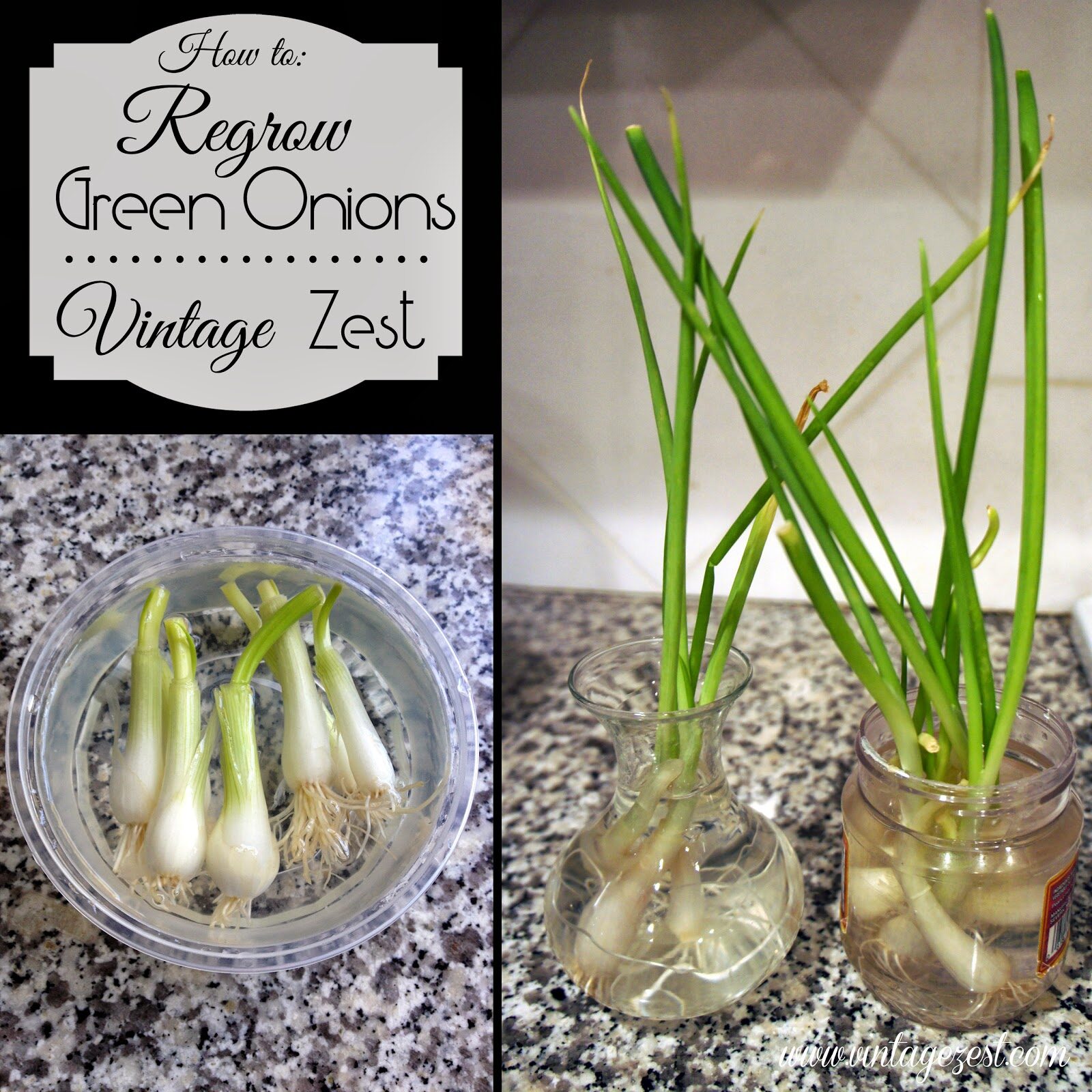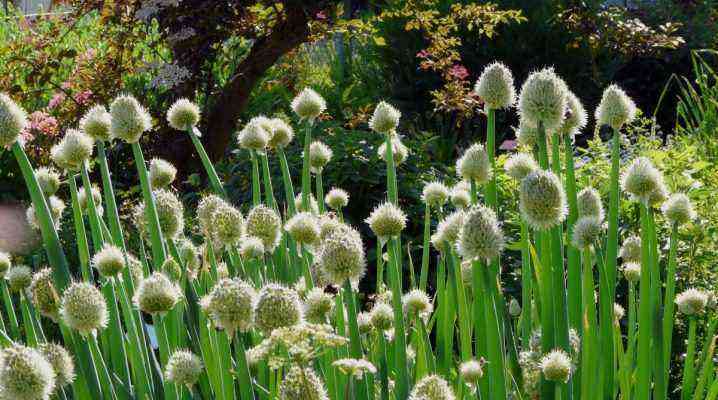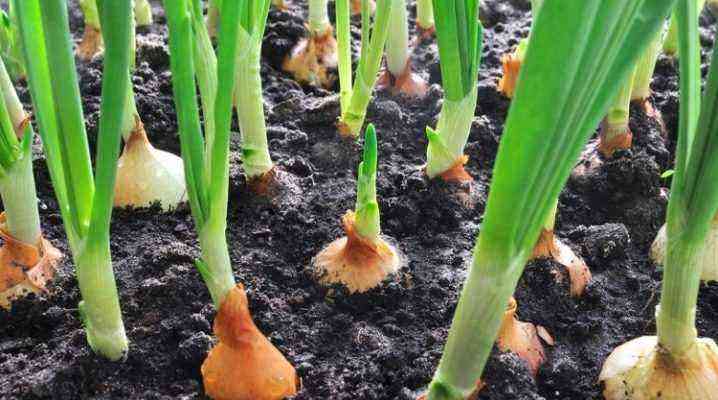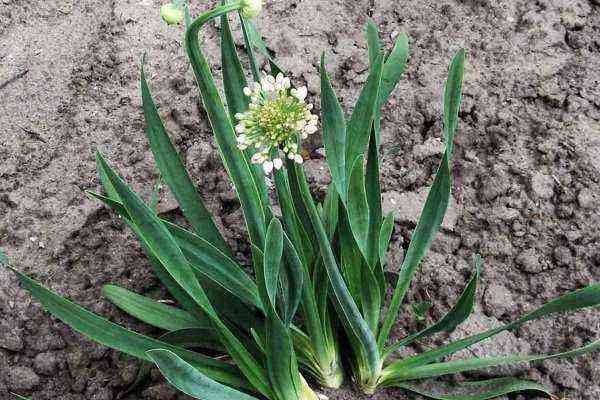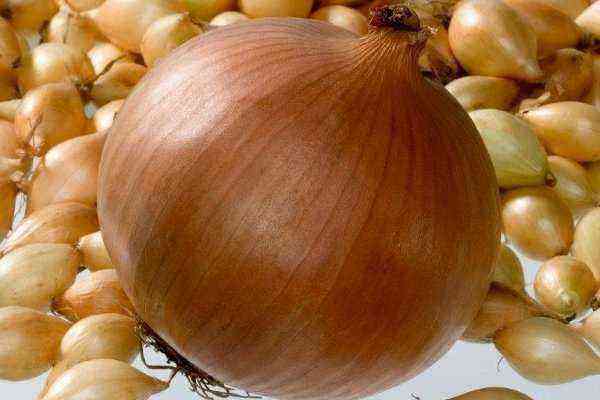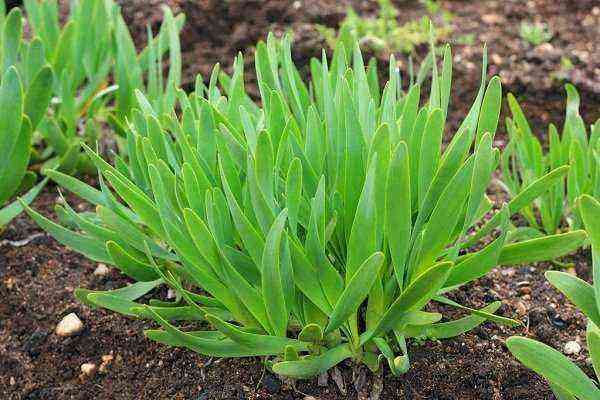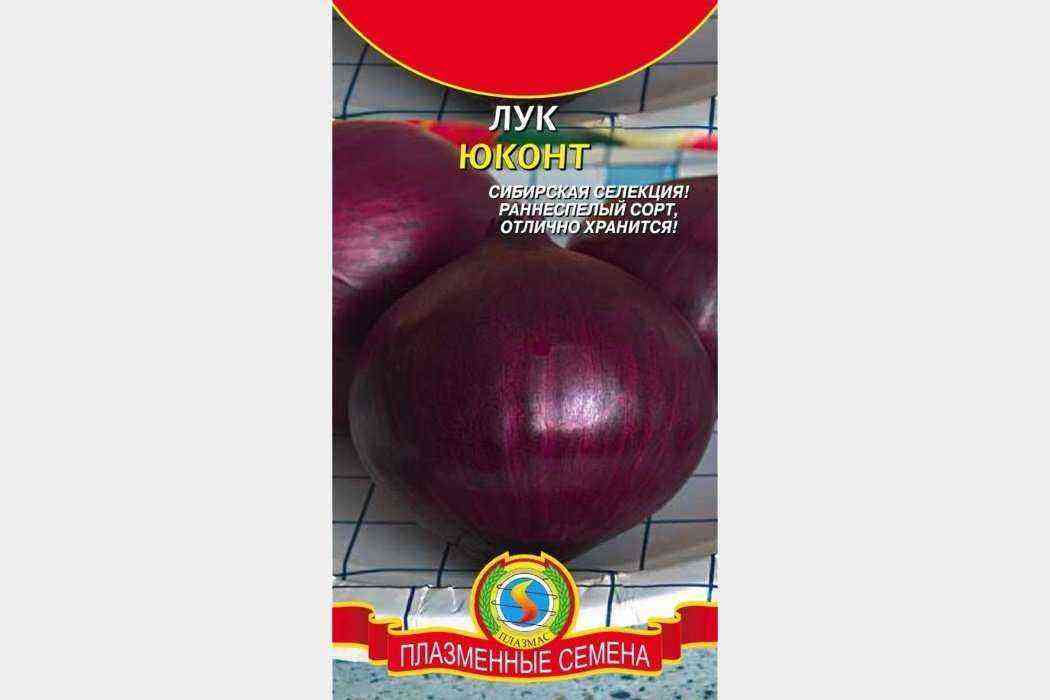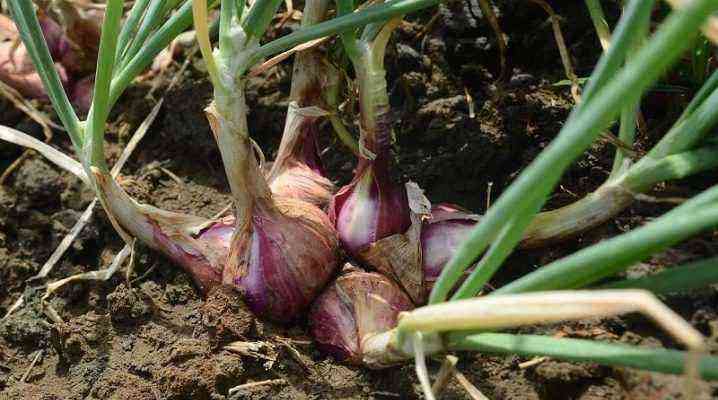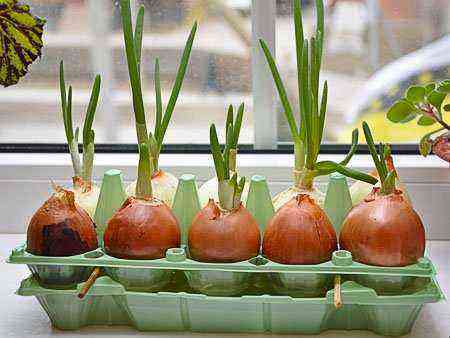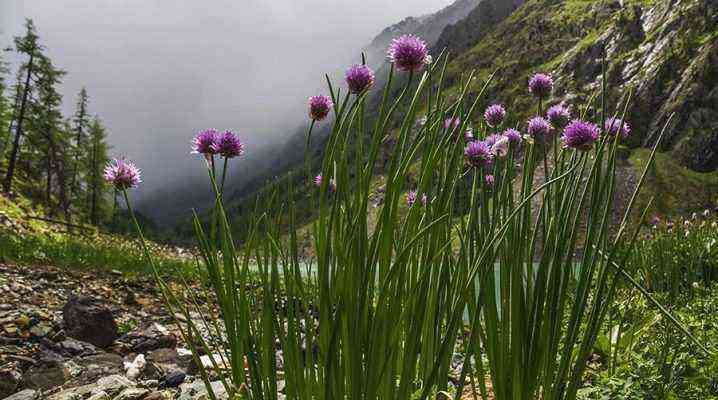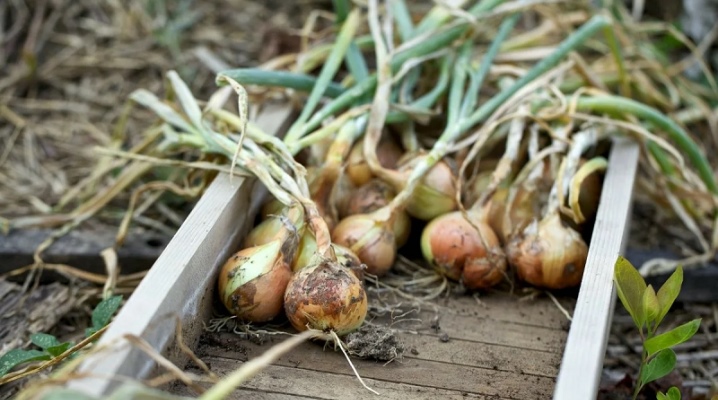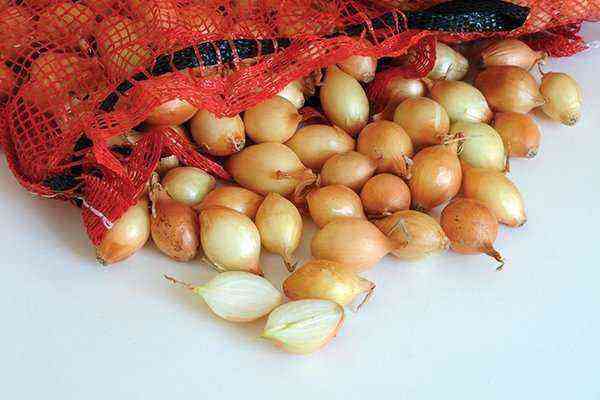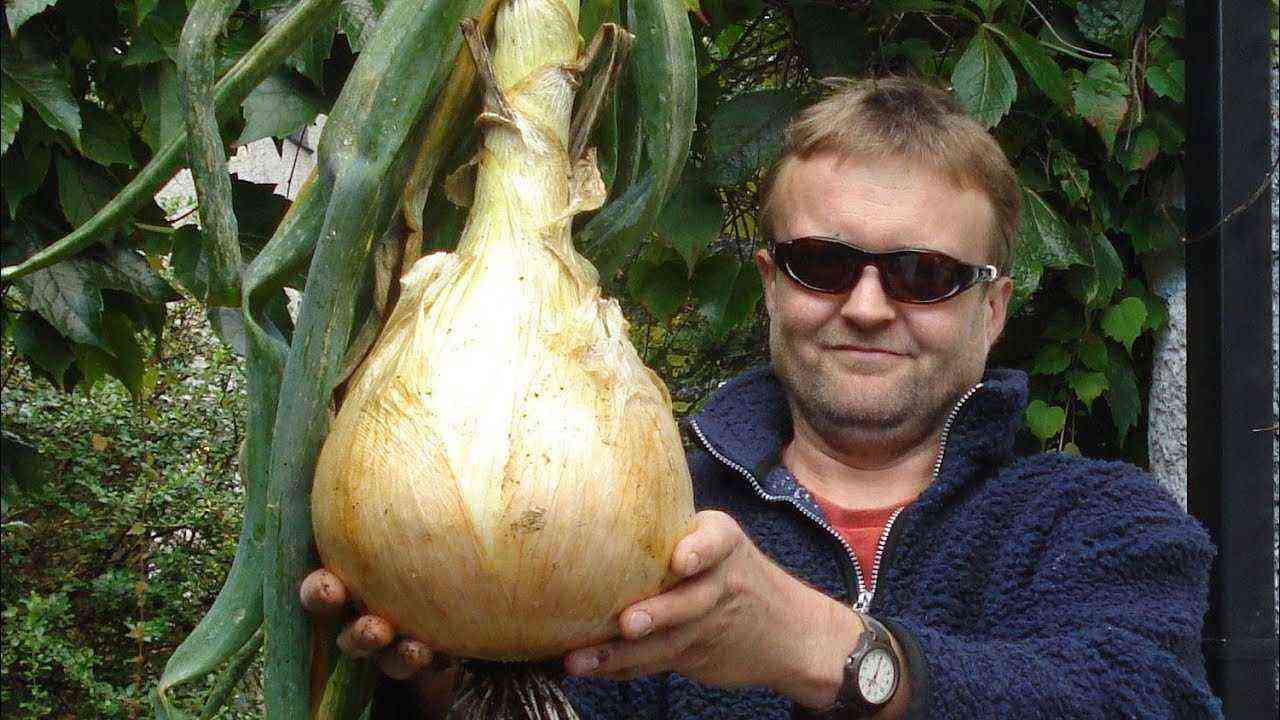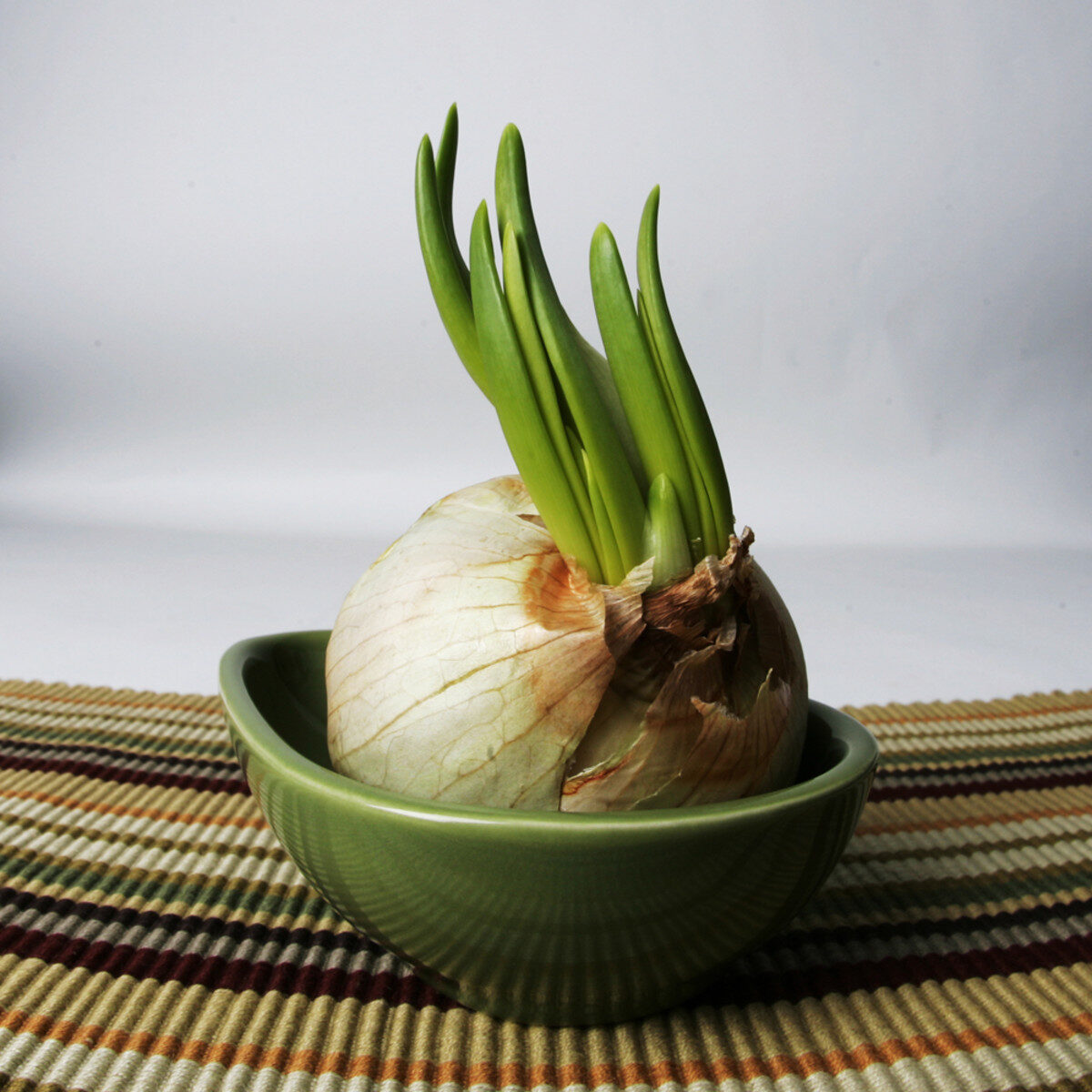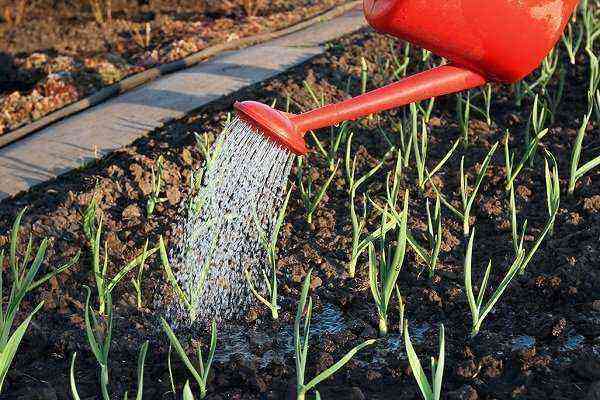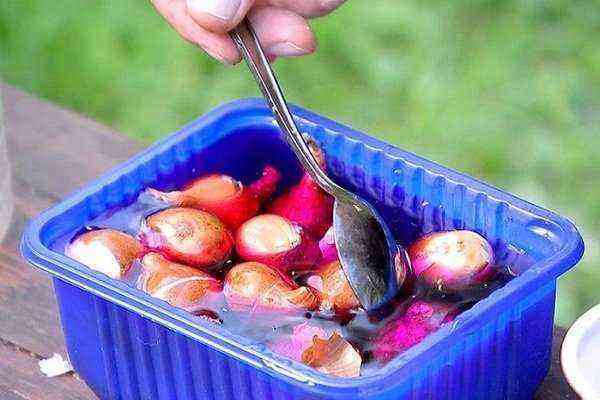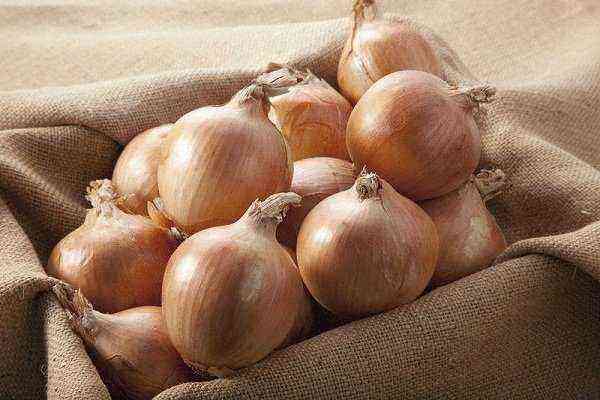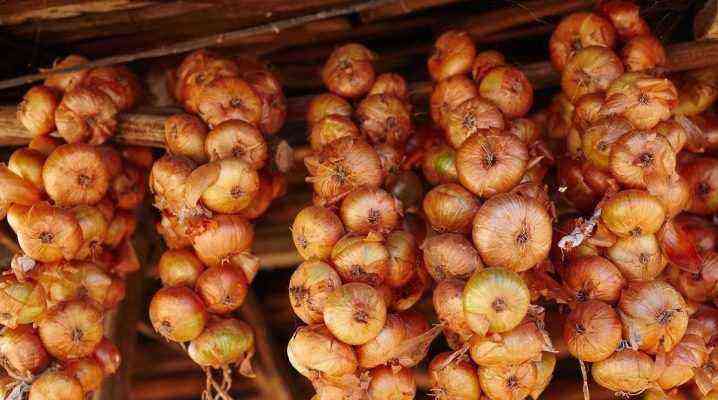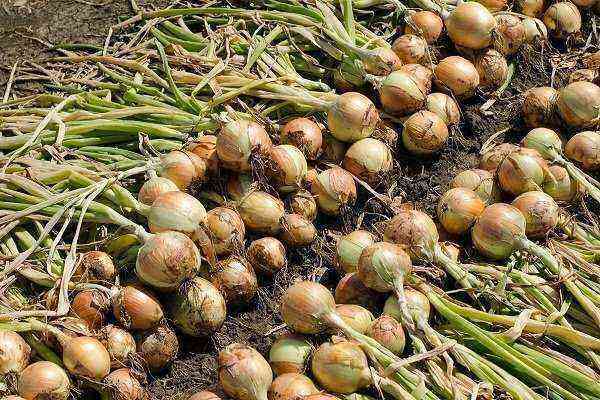Growing onions on a feather at home is a common thing for many city dwellers. But to get a decent harvest, you must follow some rules of care and planting, using different growing methods.
What varieties are suitable for growing on a feather at home?
It is important to choose the right variety of onion crops, since depending on the type, the onion has a different taste, and not every variety is grown for greens. What varieties are preferred:
- Batun, he is Tatar and winter. It is considered high-yielding, it is annual and perennial. Feature – no bulbs, so it is planted mainly in the soil.
- Schnitt has a narrow and delicate feather part, which is up to 50 cm long. A pleasant aroma is preserved during long-term storage.
- Tiered the variety withstands cool temperatures, thanks to which it grows well on window sills in winter. Practically does not require care.
- Leek – a common variant with garlic feathers (in shape). Has no bulbs.
- Shalot – juicy and unpretentious onions with high yields. Quite low maintenance.
- Slime – similar to garlic, with a spicy pungent smell. Cultivated in a cool room, grows rapidly.
- Parade – has excellent taste indicators and good green mass.
- Onion onions are most often used by housewives for forcing feathers. Rotten heads can be used.
- Rostov characterized by increased resistance to diseases of the fungal type, gives an excellent harvest.
- Black Prince – multi-germ, due to which one bulb produces many feathers.
- Amber not afraid of diseases, differs in the density of greenery.
- Bessonovsky – shortened feathers of dense structure, average yield.
preliminaries
Planting onions on a feather is a matter that requires the preparation of a place, soil, planting material, containers. The term of seedling formation, productivity, taste qualities depend on this.
How to choose a place?
Often, in apartments, onions are planted in a container, put on a windowsill. This is necessary to provide the plant with light. If you have purchased a cold-resistant variety, it can be placed on a loggia or window on the north side. But the best option for the bulk of bulbous crops is the south side, regardless of the method of cultivation.
Selection and preparation of seed material
For distillation on a feather at home, bulbs and seeds are used. Accordingly, the latter are planted in the ground.
Features of choice:
- Seed material should be 2-4 years old.
- It is desirable to select bulbs strong, elastic (diameter – at least 2 cm). Their size does not play a special role.
- The root part of the bow must not be damaged.
- If the heads begin to germinate, the germination time is accelerated.
- You can use seedlings – small heads formed after planting seeds in the first year.
It is important to determine the germination of planting material – the seeds are soaked in a wet cloth (the more elements germinate, the better). The bulbs are subjected to trial distillation – one unit is planted in water (if it has sprouted, then the onion is ready for planting on a feather).
Seed preparation rules:
- select grains without damage;
- put them in clean warm water for a day, periodically changing the liquid;
- pay attention to the elements that pop up – these are empty flowers;
- carry out disinfection – make a weak solution of manganese, hold the seeds for 60 minutes;
- wrap the planting material in moistened germination cloth (this is not necessary, but desirable).
How to prepare bulbs:
- disinfect the onion by immersing it in a solution of potassium permanganate for an hour;
- pull out and wash;
- put in a container with warm water, leave for a day or two in the room (depending on the size of the heads);
- after water procedures, remove the top layer of the husk, cut off the top of the head by 1-1,5 cm;
- hold the bulbs in the solution with Epin, according to the instructions.
Soil and container preparation
The choice of container depends on the way the culture is grown – it can be a glass, a bottle, a box and other devices. Remember that onions do not like high humidity in the ground, as they are exposed to putrefactive diseases. To prevent this, provide the containers with drainage – drill holes on the bottom, lay out a layer of stones.
The soil requires special preparation – it must be fertile and loose. Rules:
- if the soil is dense, add river sand, peat to it;
- disinfect the soil mixture with hot potassium permanganate;
- add compost or humus;
- before planting, dry the soil after treatment with antiseptics.
landing technologies
At home, it is customary to plant onions, placing them as close to each other as possible. The use of seeds implies the duration of the formation of the feather part (2-4 months), the bulbs germinate in a few days.
Seeds
Seed material on the windowsill is planted extremely rarely, since feathers do not appear soon, but require special care. Landing technology:
- lay the drainage system at the bottom of the container;
- pour a layer of soil on top;
- make grooves to a depth of 1,5 cm;
- plant seeds in the holes (the distance between them is 2-5 cm);
- moisten the earth;
- cover with foil until sprouts appear;
- put in a warm bright place.
As seedlings grow, open the non-woven fabric daily for airing, water the seeds as the soil dries out. The best soil is with the addition of biohumus and coconut fiber.
Planting bulbs
Bulbs can be planted in different ways – in water, soil, sawdust – using a variety of containers:
- Landing in the water.
There is a classic option – pour water into a container (disposable glasses, jars, etc.), put onions and wait for the greens to appear. This technique is outdated and has disadvantages – rotting of the vegetable, the formation of unpleasant odors, the appearance of midges. Today, many people use an improved technique that speeds up the process of feather growth and minimizes problems.
Step-by-step instruction:
- Cut off the top of the onion, pierce the bottom (where the roots are) with a skewer.
- Pour settled water at room temperature into a container, dissolve 2 activated charcoal tablets, lower the head so that only the root part is in the water.
- After a day, the roots will begin to grow. Now you need to drain the liquid a little so that it does not touch the bulb, but only affects the growing roots.
- After 12-16 days, you can harvest greens.
About growing onions on a feather in water, see the following video:
- Landing in the ground.
This is the best option, excluding unpleasant odors and decay. Prepare the soil, healthy bulbs, containers – a container, a pot, a box. If you are using leeks, be sure to sprout them in water first, soaking for a week. Then proceed as follows:
- soak onion roots in water for 2-3 hours;
- pour soil into the container by 6-7 cm;
- make holes according to the size of the heads, retreating from each other by 2-3 cm;
- plant the vegetable to a depth of 2 cm (only the root will be in the ground);
- pour abundantly with settled or rain water;
- leave the container in a dark place for 2-4 days, then transfer to a lighted windowsill.
- Hydroponics.
This method is used when planting a large number of onion crops. Plate mats are used, which can be bought at a specialized store. The principle of operation of hydroponics is based on the enrichment with oxygen and useful substances, due to which the green mass grows quickly.
Feature – in the early days, the culture should be in cool and shaded conditions, after a week the system is transferred to the windowsill.
About the features of growing onions using hydroponics, see the following video:
- Growing in sawdust.
Instead of soil, the bulbs are laid in moistened sawdust. This makes it possible to avoid putrefactive diseases, bad odors, and dirt. The only negative is that after collecting the greens, the sawdust needs to be changed.
Boarding process:
- disinfect sawdust with boiling water;
- put them in a container;
- deepen the bulbs by 3 cm;
- pour water;
- put the container on the sunny side of the apartment.
Feathers are harvested after 10-15 days. To prevent decay during irrigation, hydrogen peroxide is added to the water (1 ml per 10 liter).
For information on how to plant onions in sawdust at home, see the following video:
- Growing in a bag.
Take a tight plastic bag, toilet paper, prepared heads. Instruction:
- put paper on the bottom of the bag, moistening it;
- arrange the bulbs close to each other;
- inflate the bag with air;
- tie tightly with a rope or elastic band;
- put in a dark place for the germination of the root system;
- expose to light after 3 days;
- it is forbidden to open the package until harvest (about 10 days).
For information on how to grow onions in a bag, see the following video:
- bottle method.
This is a universal vertical feather forcing method that saves space on the windowsill. What you need:- 5 liter bottle (after food drinks only);
- scissors/knife;
- bow;
- priming;
- expanded clay stones.
Tank preparation:
- cut off the neck;
- cut holes around the lower perimeter (the size depends on the diameter of the vegetable, the number depends on the number of root crops);
- make the rest of the holes in a checkerboard pattern;
- sand the edges of the holes with sandpaper or a soldering iron;
- pierce the bottom with an awl to create a drainage system.
Boarding process:
- lay the stones in one layer on the bottom of the bottle;
- pour a little substrate from the soil, peat and humus on top;
- compact the soil;
- lay the prepared heads in the holes (horizontally), adding earth;
- place the top bulbs vertically;
- sprinkle with water.
Onion care at home
In order for the onion to give a lot of greenery, it is necessary to provide it with favorable conditions. Regardless of the landing method, adhere to the following care rules:
- lighting should be present for 10-12 hours, but there are no special requirements;
- temperature regime: air temperature – from +18 to +22°С, soil or water – from +12 to +25°С;
- be sure to ventilate the room, thereby reducing the risk of rotting of the bulbs;
- watering the soil and adding water is carried out with warm settled water or rainwater (it is forbidden to use tap water, which is collected before the procedure).
When grown in soil
When growing onions on a feather in the soil, more sunlight is needed, so the container should be on the sunny south side. How to take care of the culture:
- Remove to fresh air or open windows daily. This should be done starting from the moment when the feathers reach 3-4 cm in length.
- Top dressing is usually not done, but experienced gardeners recommend adding potassium chloride, superphosphate, ammonium nitrate, in accordance with the instructions for use, at the initial stages of green growth (4-5 cm). Further, when the greens can be cut, fertilizers are not used.
- Bulbs need to be watered 1-2 times a week. If there are heaters nearby that dry out the air, the frequency of humidification is increased.
- If the bulbs are not planted too close to each other, periodically loosen the ground.
- Water the greens 1-2 times a week, especially when the air temperature in the room is high.
To harvest continuously, plant the bulbs in 2-3 containers with a difference in planting time of 2-3 weeks.
When grown in water
If the bulbs are grown in water, you will have to constantly maintain the same level of liquid in the containers. Water should be changed as an unpleasant odor forms – about 1 time per week. For this, water at room temperature is used, always settled.
When grown in a bottle
In bottles, bulbs are planted in the ground, so they are cared for in the same way as when planted in boxes / containers. The only difference is watering, as the soil dries out faster in bottles, so you need to moisten it more often.
Harvesting
Feathers begin to be collected after reaching a length of 25-35 cm. Only greens are cut at a distance of 1-3 cm from the bulb. You can collect feathers both in bunches and one at a time, depending on the need.
Useful Tips
There are many tricks and tricks in growing onions on a feather, thanks to which you can get a lot of greenery and get rid of possible problems. Important recommendations:
- Egg trays can replace expensive hydroponics. To do this, take 1 plastic tray, dividing it in half. The lid will play the role of a pallet, the cell – the upper tier. In each cell, cut off the bottom, install the bulbs in the holes. Pour water into the pan, place the upper tier, laying wooden sticks between the two elements. This is necessary so that only the roots, and not the bulbs, are in the water.
- Whatever you grow bulbous feathers in, be sure to place trays under containers and containers to drain water after watering.
- Onions love light – without it, feathers become light, yellow and lethargic. Therefore, in winter, it is necessary to provide “beds” with additional light – put a phytolamp, a luminescent installation, and the like.
- If the apartment is too hot, the onion stops the growth of green mass. In these cases, you need to wrap the container with ordinary foil, which will protect the heads from overheating.
- In the soil taken from the street, insects and pest larvae can remain, which, under favorable conditions, actively multiply. To prevent this, do not refuse the disinfection procedure with boiling water. The earth can be roasted in the oven for 10-15 minutes.
- For forcing greens, try to select mother bulbs that yield 2-3 times more feathers.
Growing bulbs for feathers, regardless of the method, you can delight your family with fresh herbs all year round. The main thing is to decide on the method of planting, strictly follow the requirements of agricultural technology and do not forget to harvest.
